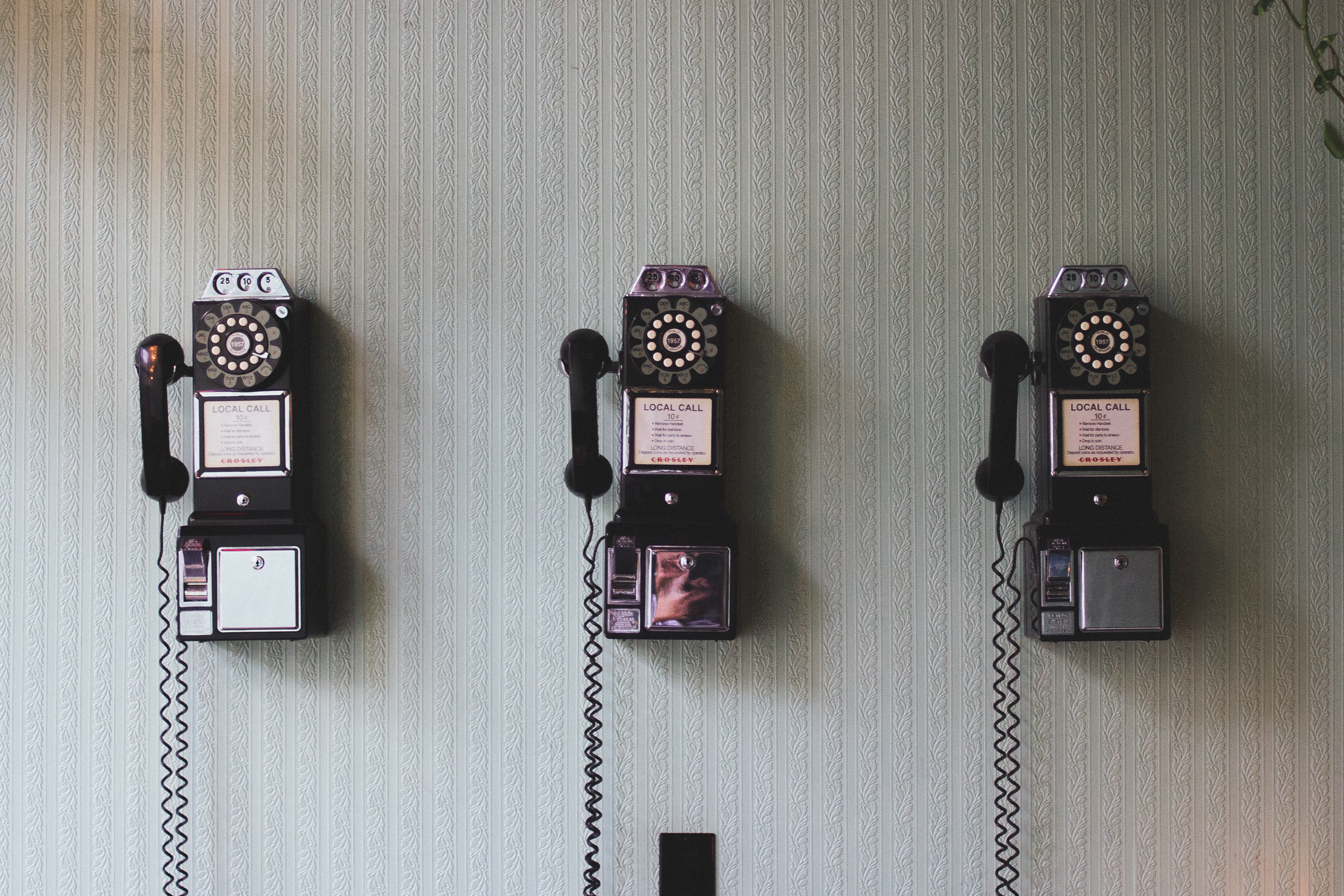Devesh here – this is a guest post by Thomas Carney (bio at the end). We think it’s super useful. He covers the following aspects of conducting customer interviews by telling stories and using examples from his own experience:
- A nice story of an unexpected insight he gleaned from a conversation with a customer
- His process of finding prospects (that fit a profile) to interview via LinkedIn
- His email template and super simple spreadsheet CRM for tracking who he’s reached out to.
- Why he records, transcribes and highlights interviews instead of taking notes
- Some clever ways he analyzes responses with tables
If you’d like to learn our more extensive customer research process, we also teach this in our course. You can learn more about it here.
Here’s Tommy…
I was on the phone with a customer based out of Texas to better understand how his company was using our product.
30 minutes into the call, I got past the small talk and into the nitty-gritty of this customer interview.
He was explaining the importance of our API in their workflow. Important: I had never intended to get into a discussion about our API. Apparently, they’d hooked up a metrics board in their office directly to our API, so they could see real-time stats on their productivity.
When I probed deeper, he recalled that it had been quite a bit of work to figure out the API, as the API’s documentation was very sparse.
Our API’s documentation was sparse? News to me!
Fast forward to today, and our product now has a beautifully documented API with code examples all ready to go.
At the time I wasn’t focused on our API documentation, so I never would have thought to ask about it in customer interviews. It was only after 30 minutes of chatting that he even brought up the topic.
I certainly wouldn’t have thought to send out a survey to our customers asking how what they thought of our API documentation.
And that’s the crux of interviewing your target audience in person, or by phone: you’ll uncover that you don’t know what you don’t know.
But let me back up here a little…
When I joined a project management company called Planio, I’d used a few project management tools before. I had a vague idea that the target audience would be project managers.
But honestly, I didn’t really understand them.
If you asked me what drives them to look for the product, I could only give you abstractions such as “they need to get more organized” or “they need a project management tool”.
If you asked me how they’d use the product, I’d also resort to abstractions.
Those abstractions are fine, but they don’t really mean a whole lot.
If you stop at abstractions, then when you go to write your landing page, you’ll end up with some copy that looks like this:
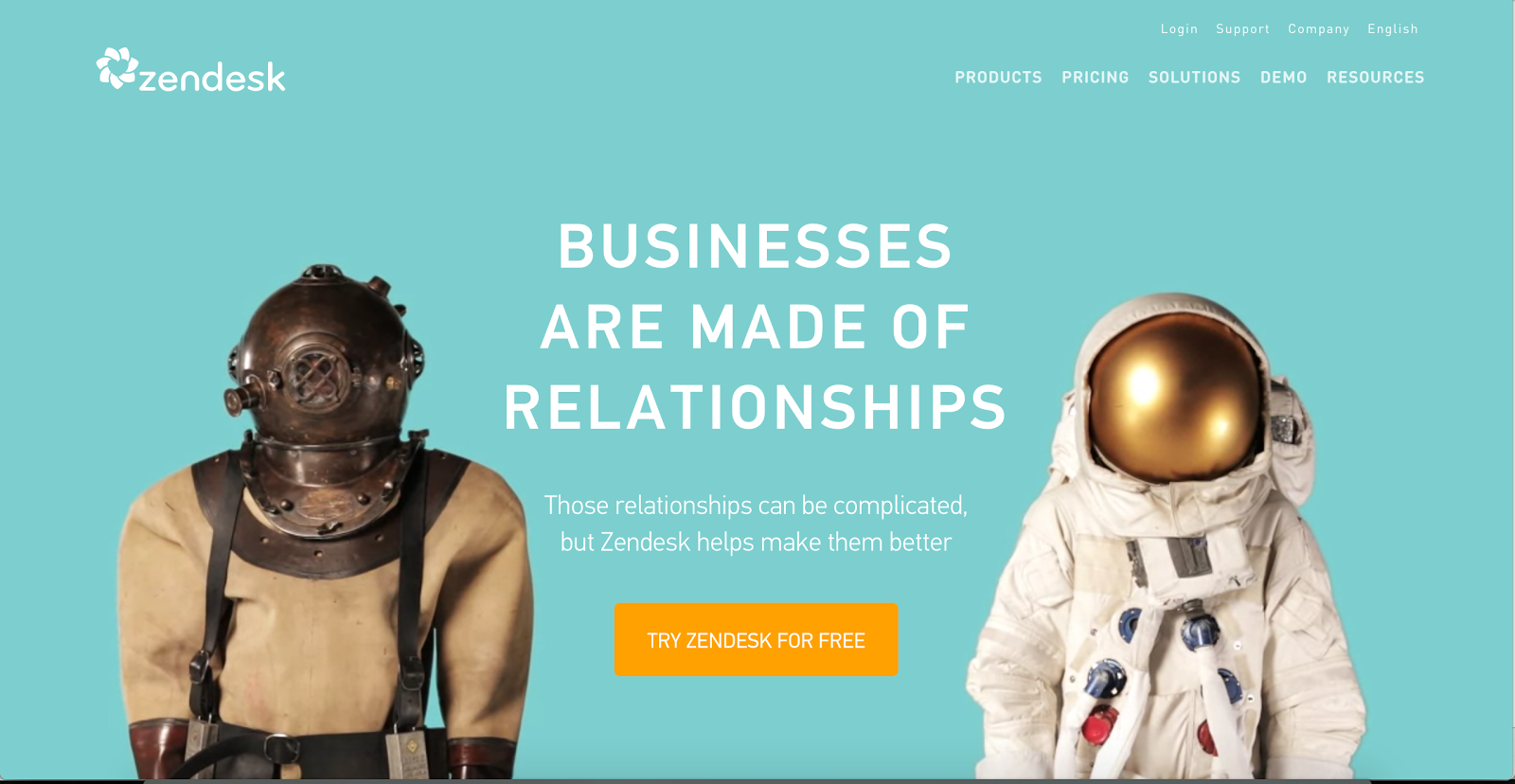
Based on the above, I’m willing to bet Zendesk offers very Zen trips to both Mars and the depths of the ocean.
Sounds like SpaceX with a dash of submarines, right?
Nope, sorry to disappoint you. It’s a customer support tool. Gotcha!
What You’ll Gain from Live Customer Interviews (That You Can’t Get from Simple Surveys)
As Benji wrote, many marketers don’t really know their customers, and it hurts the growth they can achieve, and on Grow and Convert, Benji and Devesh have written about email surveys and on site surveys.
But having real, live, extended conversations with people in your target audience has unique benefits:
- You’ll learn things you didn’t know you didn’t know. Just like my Planio API example above, customers will take you down rabbit holes that (a) you would never think to ask in a survey and (b) they may never take the time to outline with an open ended question in a survey. But in a free flowing conversation, these use cases and problems you didn’t know they had tend to surface.
- You’ll be able to build up personas that aren’t just cookie-cutter “Marketing Molly” outlines. Instead, you’ll be able to write highly specific articles that you know touch on the exact pain points other customers have told you about. These highly specific articles have a much higher chance of generating sales-ready prospects rather than the same old top 10 list everyone else is publishing.
- You can learn about your customers even when you don’t have them. Finally, for many companies that don’t have a large customer base (or any at all), you sort of have no choice but to have real extended conversations. If you have 50 customers and send an email survey, getting 5 responses with a few lines each isn’t that valuable. But having five 30 minute conversations could be a lot more insightful.
My Process for Setting Up 20 Informational Interviews with Cold Prospects
So, let’s imagine that you’re in on the idea of actually jumping on calls with your target audience.
And, for the sake of argument, let’s go with the idea that you don’t actually have any customers yet.
You’re “pre-revenue” in Silicon Valley jargon.
Here’s how I went about setting up calls at a previous company where we were “pre-revenue” for a new product.
First off, I followed the same outreach steps as if I were doing sales development, but in this case you’re just asking for an informational interview.
That means you have a sales funnel. You need to qualify prospects. Then, you need to reach out to them to set up a call, and then you need to actually get on that call.
It’s simple, but it’s not easy. It’s going to feel harder than it sounds when you actually do it.
Step 1: LinkedIn Search
LinkedIn is pure gold for finding people who meet your target audience. In a couple of clicks, you’ll find product managers at gaming companies in your city. You’ll see how you’re connected to them, so you can reach them via friends.
Here’s the exact roadmap of how I do it:
Now, I’ve got a list of 10 to 20 people who might be a good fit. I don’t go for more than that, because I want to focus on taking action, and I may tweak my approach on the second batch if I notice I’m not getting good responses.
Step 2: The LoFi Spreadsheet CRM
Now, how do you get a call or, even better, a coffee with the people on your list?
It’s tempting to send them LinkedIn InMail, but I’d advise against that for a couple of reasons.
First off, I’ve found that people don’t respond all that well to LinkedIn InMail. My response rate on LinkedIn InMail is far lower than when I use email.
Roughly speaking, 2 out of 3 of my emails get a response, whereas looking at the last 10 InMail messages I sent via LinkedIn, only 1 has a response.
Secondly, the fact that you can use services such as YesWare also means you’ll get some feedback if people don’t respond but are opening your emails.
This data will let you know where any issues are. Are you sending emails that aren’t getting opened? Maybe you have a subject line issue, or the email addresses are out of date.
If they are getting opened, perhaps could you improve the email or follow up more?
I usually break open a Google Sheet for this so I can keep track of who I’ve emailed, who’s responded and who hasn’t. It’s a lofi sales CRM.
Here’s what it looks like:
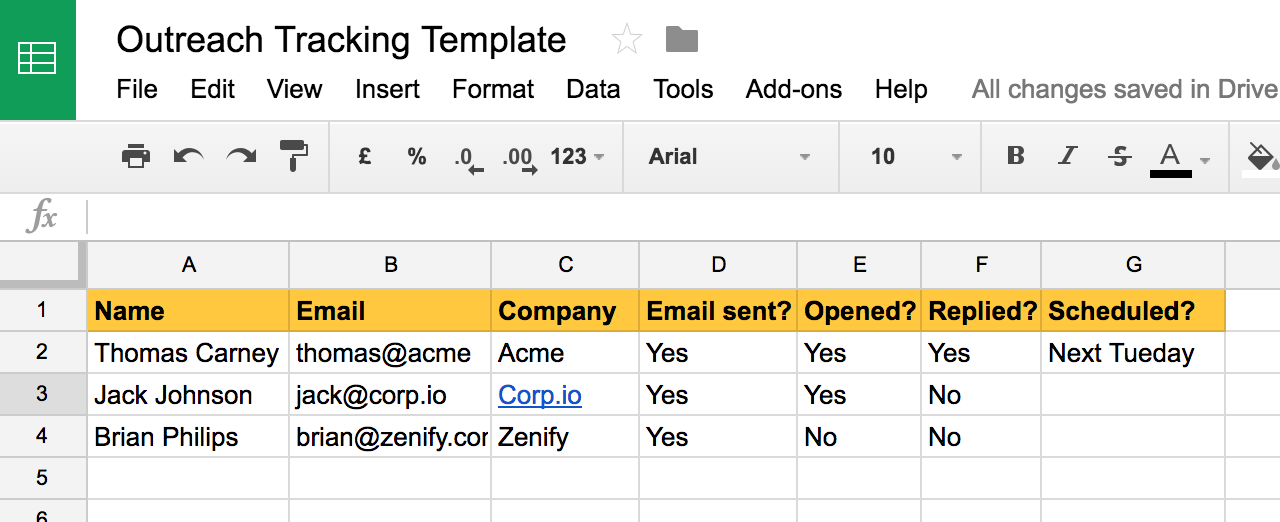
Again, the idea of this Spreadsheet is just to give a quick glance into what’s working and what isn’t.
A long line of opens but no responses? Work on your email.
No opens? Make sure you’re finding their current work email address using services such as Email Hunter, or the email permutator method we’re giving to our email subscribers and tweak your subject line.
Now that you have their email address, it’s time to go a knocking.
Step 3: The Email for the Ask
As you may have noticed in the video above, LinkedIn will give you a list of people you know who are connected to the people you want to talk to.
Obviously, a “warm” introduction via a mutual friend almost guarantees a meeting with them. That’s just the power of warm introductions in action.
But let’s be honest here. Many of our connections on LinkedIn are far from “warm”. Sure, you may be connected with them, but you might not have talked to them, ever. And they may have never talked with the person you want to talk to.
So, while I always try to make a warm introduction via a mutual friend, it’s often the case that it doesn’t work out as planned. That’s where I’ll step up and send a ‘cold’ email to the person I want to talk to.
Here’s an example of an email I recently sent out to a cold contact to set up a meeting:
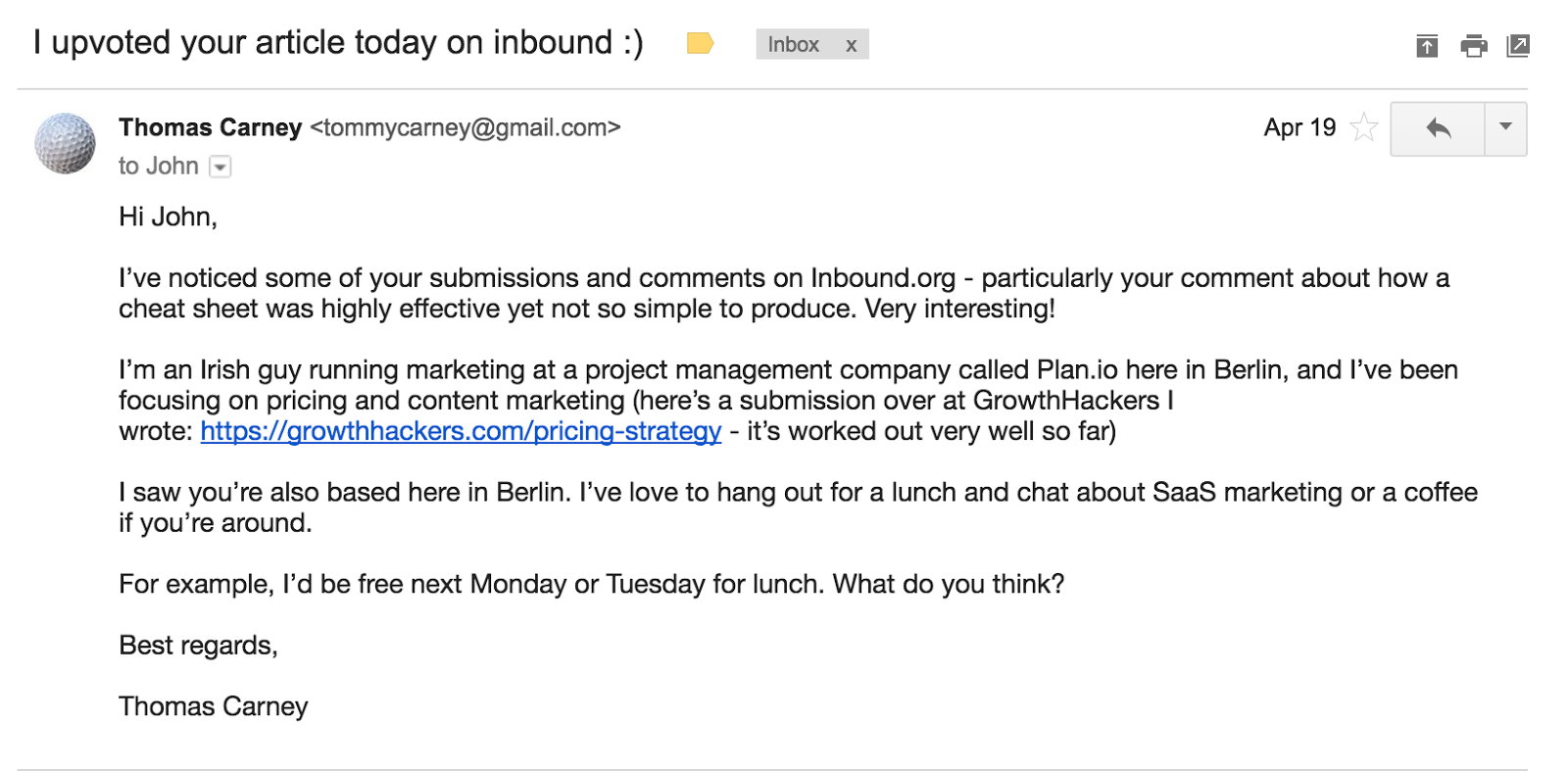
Honestly, this email took some time to write and plan. I used a quite powerful persuasion technique of reciprocation — I was reaching out with a message saying I’ve ALREADY done something for the other party, and I made a request to get together for coffee or lunch.
I also used a compliment demonstrating that this is not a mass email. You can always find something that the person has done well or that their company has done well. Compliments always work, even if we know the person is complimenting us!
Therefore, I’d spend 10-15 minutes on each person. Quality will beat out mass emailing here.
In fact, I’ve found that when I’ve sent out mass email blasts, I didn’t get high quality responses. I usually ended up with people who’ve misunderstood my email as a job interview or an opportunity for them to sell me something.
In the email above, I just suggested two different times for lunch as we were both in the same city. However, if you plan to do the calls on Skype or on the phone, scheduling solutions such as Calendly can solve a lot of the back and forth.
Step 4: Booking The Call
I generally look for a reply rate of about 66% and a positive response in half of those. So, if I sent out 10 emails, I’m looking to get 3 calls set up. If I’m not hitting those numbers, I’m not researching the person enough before hand.
Once they’ve agree to a call, I’ll send them over a Google calendar invite, so in many cases, they’ll get an automatic reminder on their phone.
Now, it’s time to prepare for the call.
I’ll usually bundle up my leading questions into three groups: person-focused, product-focused and value-focused.
In the first group, I want to learn all about who they are, how their typical day looks and how they do what they do.
I’ll ask questions such as:
- What does a typical day in your role look like?
- What’s a great day? What would be a huge win for you?
- What kind of struggles have you had in the last week?
- What’s the typical career path for someone in your role?
In the second, I’ll focus on what pains or drivers motivate them to look for solutions — such as the product I am selling or want to sell. I’ll dig into where they started looking for a solution.
Therefore, I’ll ask existing customers questions such as:
- Could you describe how you found our product?
- What was going through your head when you were looking for it?
- Is there anything that pushed you in favor of us?
- How does it fit into your day?
- What does it let you do that you couldn’t do without it?
Finally, I’ll get to value-related questions. Here I’m trying to figure out whether the person sees a particular product or even a generic solution to a problem as a ‘vitamin’ or a ‘painkiller’. Or in other words, will it be a ‘nice-to-have’ product or will be an essential product?
Here’s some of the value-related questions I’ll ask:
- What’s the feature in our product that brings the most value?
- At what price point would we become expensive but still worth it?
- At what price point would we become so cheap you’d wonder whether we’re high enough quality?
Here’s a more robust list of survey questions to ask, if you need help thinking of other follow-up questions.
The Good, the Bad and the Awkward of Interviews
When you’re interviewing people for marketing insights, the usual rules of small talk don’t apply.
As the Nielsen Norman Group say in this article, you want to ask open-ended questions that will give you longer, richer replies, rather than yes/no questions.
You’re looking for the struggles, pains and motivations that drive a person to look for a solution, and the words they use to describe that process will be gold in your copy.
That means when you start talking to them, you have to give them space to answer. You can’t just rush them through the questions.
The first time you ask them an interview question, they might give you a short one-line response.
For example, if I ask why they looked for a project management tool, they might answer, “We were super-disorganized, so we need to get a handle on things”.
At this point, it’s often good to leave a 5-second pause for them to follow on — maybe a story of just how disorganized they were.
And if they don’t add that in, I’ll ask them to go into more detail about how disorganized they were.
Honestly, I felt weird the first couple of times I interviewed people like this. There would be an awkward pause. I’d feel uncomfortable. Then, I’d start “suggesting” answers, and they would just agree with my suggested answer. Unfortunately, answering the questions for them just meant that I missed out on deeper insights.
Keeping Track of Responses: Why I Don’t Take Notes
During my very first interviews, I tried taking notes by hand while on the Skype call.
However, I found that it was distracting. You can’t focus on the conversation while scribbling down ideas. And then when it came time to analyze the notes, I could never understand what I tried to write earlier!
Therefore, the simplest way I’ve found of keeping track of their responses is a mixture of recording the Skype call and then getting someone to transcribe the recording to text.
(Obviously, you should ask the interviewee if they’re okay with you recording the call for purposes of analysis.)
I use the rather descriptively named “Call Recorder for Skype”. Once I’ve had the call, I’ll get someone to transcribe it on Fiverr for about 10 dollars, so I have a written transcript of the call.
Another great way to go that’s faster and cheaper is Temi, which offers speech-to-text transcription in about 5 minutes, with about 85% accuracy (for about $0.10/min).
Here’s an excerpt of our transcript:
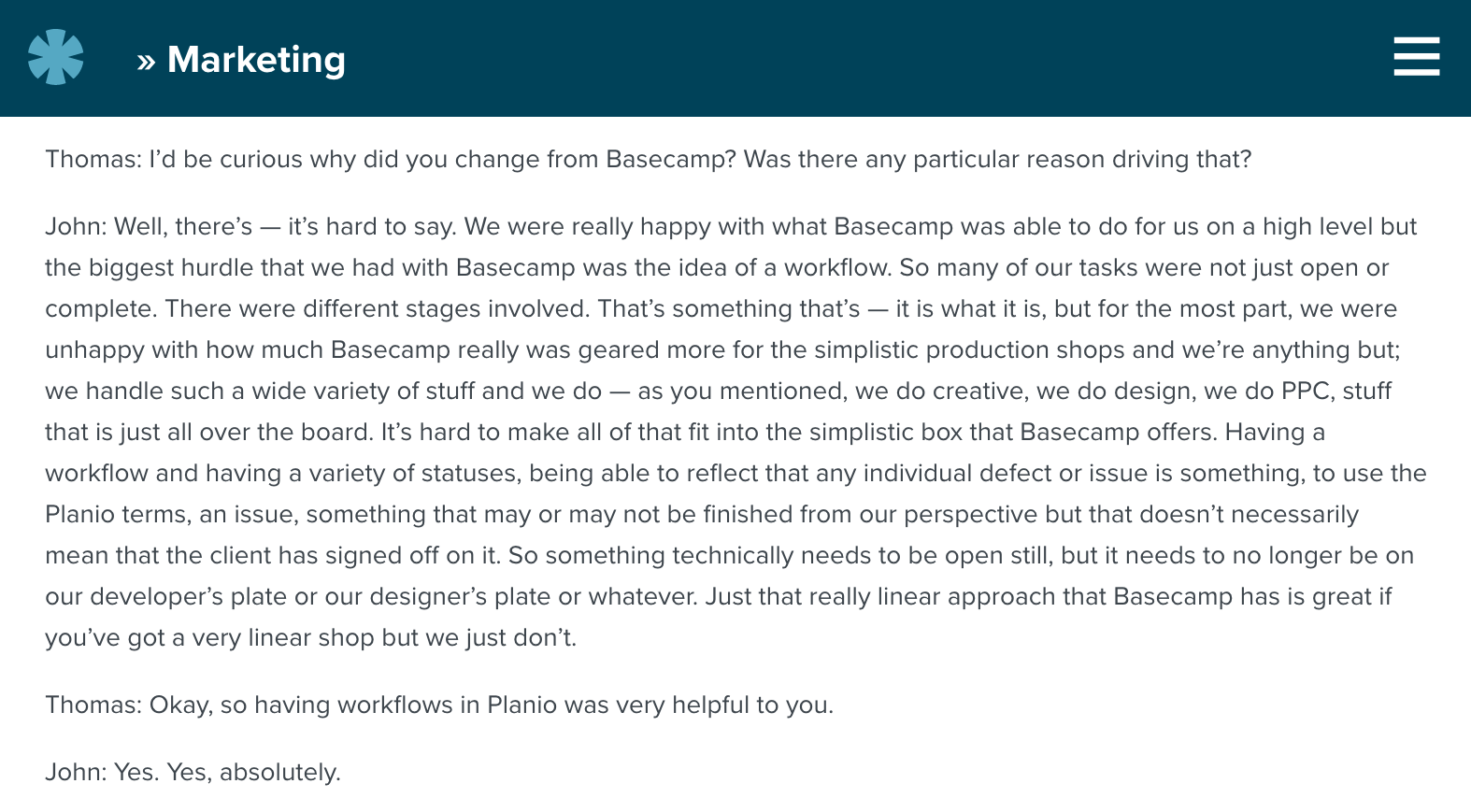
A 5,000 word transcript is still too much to read on a regular basis. That’s why I go through the transcript, highlighting particularly insightful sentences. Then, once I’ve done that I’ll summarize my key findings for that person along with the actual sentence that they used.
That’s great for quickly pulling out insights and organizing themes from conversations. I then store the transcript along with a summary of key points in a wiki for future reference.
Drawing Conclusions from Customers Interviews
After a few months you’ll have built up a collection of customer interviews, each summarized for review. At this point, you’ll start to have enough material to start drawing conclusions from across these interviews.
For this purpose, I utilize several techniques I learned from Joanna Wiebe of Copyhackers in an article on Unbounce.com. The first of which is an assessment of the barriers and pains versus the drivers and delights.
I’ll go through the summaries and I’ll pull out memorable phrases that fall under one of those four categories. Here’s an example of the analysis I did on the reasons why people signed up for Planio, a product I market:
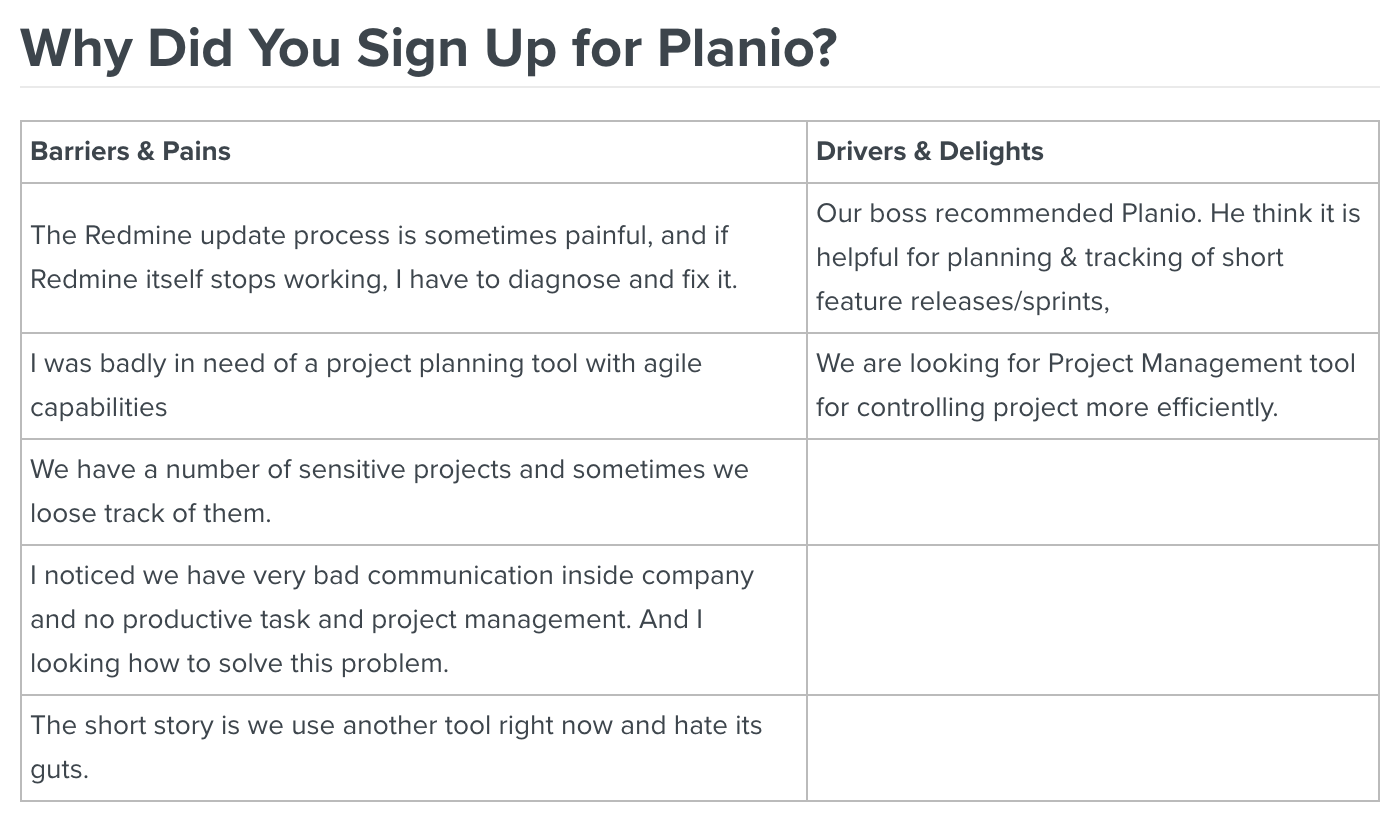
These comments are very valuable, because they are coming straight from the mouth of our customers. When someone says that they are “badly in need of a planning tool with agile capabilities” it’s clear that there is a compelling need for a solution.
In my mind, I’m already thinking of a blog post I could write outlining what you should look for in such a tool. Or perhaps I could test adding in the word “Agile” to the headline of our homepage.
The next analysis is a WHaLP assessment that stands for Wants, Hope, Lacks and Problems. I’ll browse through the customer interview transcripts looking for these four things. In my example below, I was going through answers from project managers.
- What do they want? For example, I’ve noticed that project managers often WANT to be part of strategic decision making.
- What do they hate? From the transcripts I noticed that project managers are annoyed by vague goals and expectations of highly specific results.
- What are they lacking? I watch out for words such as “I can’t” or “I need” in customer feedback. For example, project managers lack documentation in writing of decisions by clients to extend scope or move deadlines.
- What kind of problems motivated them? Problems that are so big that they’ll spend time and money looking for a solution are gold, because it indicates the willingness to pay for help in solving that problem.
Here’s an example of the WHaLP analysis I did on project managers:
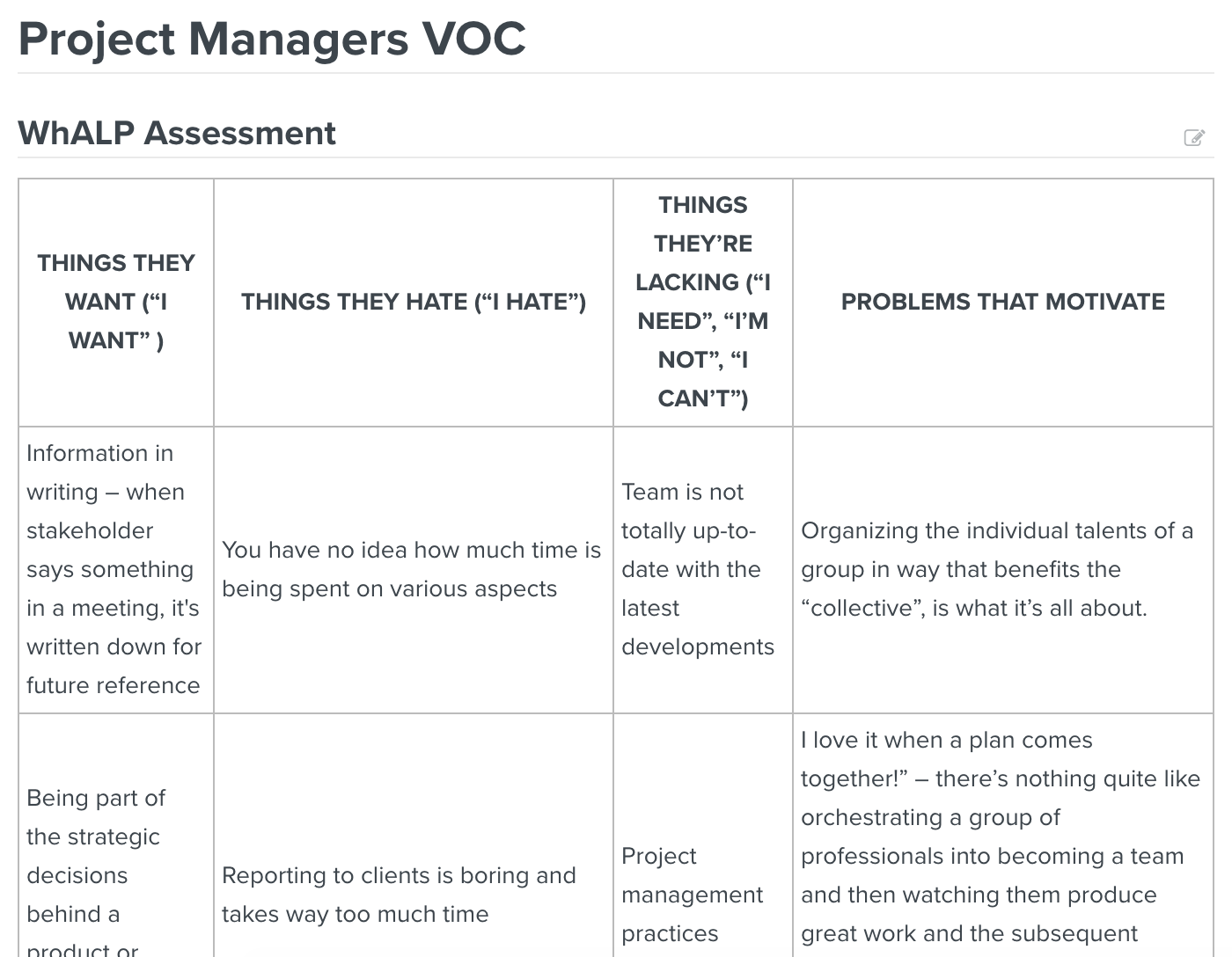
Getting Results Based on the Insights You Gather
Last year, after a round of customer interviews, I came to a realization that many people wanted a simple step-by-step guide to managing projects that didn’t involve jargon and ideas that they didn’t understand.
And I didn’t base this conclusion on what they said. I based on what they weren’t saying.
The people I talked to weren’t talking about advanced topics such a critical path analysis or Monte Carlo simulations that many project management blogs focus on.
They were just trying to coordinate a few people to ship a new company website.
So, I wrote a really, really simple guide to managing a project packed with practical ideas people could use immediately.
It really wasn’t rocket science.
And yet the page now ranks as high as #2 on Google if you type in “how to manage a project”. In fact, Google sometimes shows the table of content of the article in the Featured Snippet:
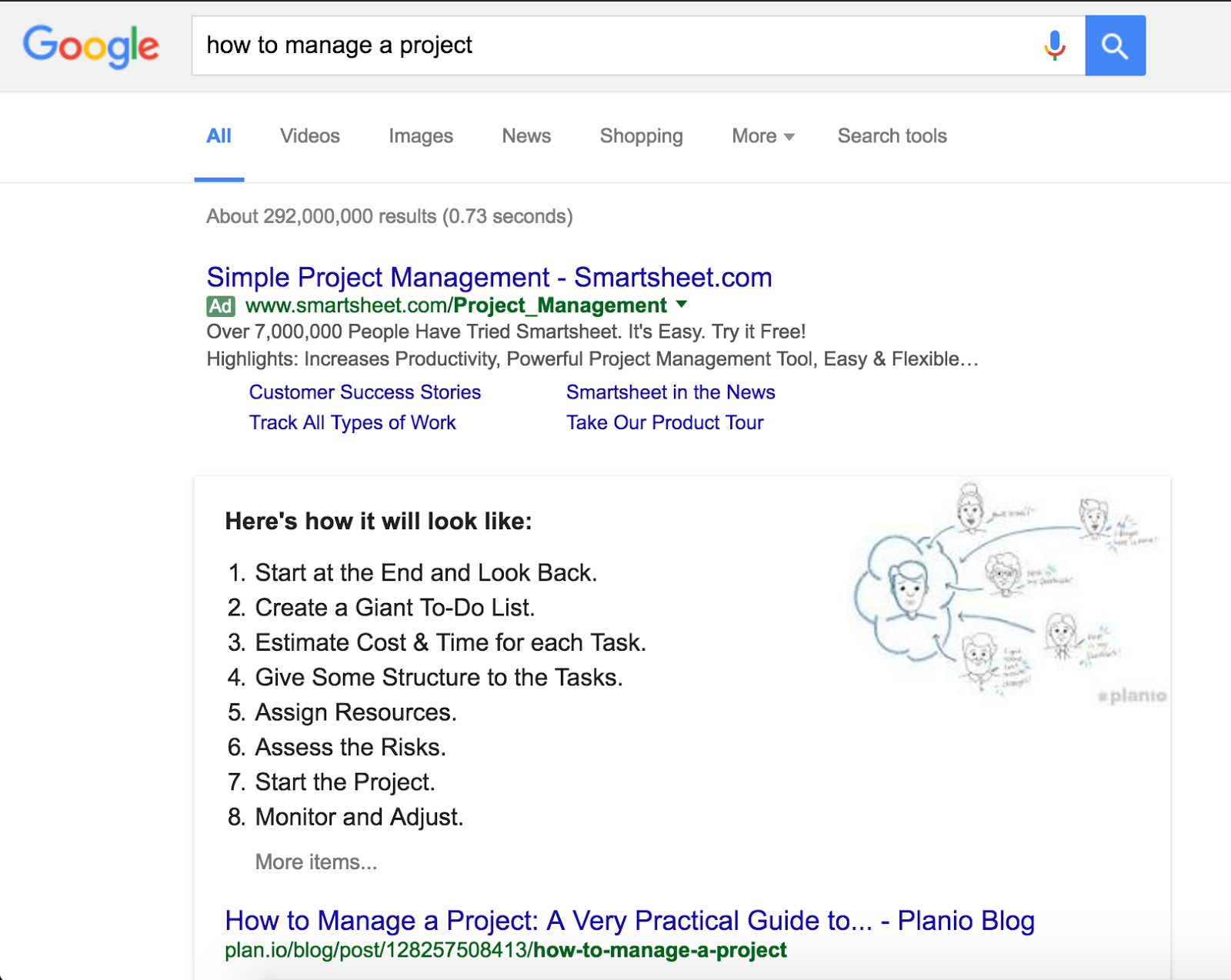
Thousands of people per month read this blog post.
My point is that customer interviews will give you a context in which to understand your audience.
You’ll start seeing in between the lines of what they say and do. You’ll be able to intuitively predict whether they’ll like a particular blog post or not.
In an interview with Kevin Kelly, Tim Ferriss gives the example of how he found his writing style for the Four-Hour Work Week by writing for two specific people he knew who’d be a great fit for the book.
You’ll be able to do the same when you’re creating content for your audience. You can even email them the article for their feedback if you’ve built up a strong enough relationship.
In her podcast, Amy Hoy tells the story of budding software entrepreneurs seeing a bar or a hair salon struggling with staffing issues, and they immediately start building a staffing solution, because they’ve verified that there’s a problem and they can provide a solution.
Unfortunately, Amy Hoy says, they invariably fail, because if they studied their target audience more closely they’d realize that hair salons are the type of people who never buy software. If hair salons were the type of businesses that bought software, they’d have long since adopted a solution, even if it was an Excel sheet.
Customer discovery through interviews gives you finely-grained insights that you won’t get if you only survey a small sample of people.
This is Simple, But It Ain’t Easy
So, that wraps up my guide to talking to your target audience.
You have a template for narrowing in on your target audience, finding members of that audience, reaching out to them with a solid email asking for a call.
You have ideas for the exact questions you can ask them. You know how to take their answers and turn them into actionable insights.
Now, my challenge to you is to go out and talk to 5 people. It’s easy to spend time on doing things that don’t count but are easy in the moment. I’m happy to help you in any way I can, including giving you a free 30-minute call. You’ll find the details here.
At the end of the day, it’s difficult to do the things that matter. But go do them. Go understand your audience!
Thomas is an Irish guy living in Berlin who’s spent the last couple of years marketing for software-as-a-service businesses. He’s currently working on marketing at Planio and you can get in touch with him over at ThomasCarney.org.
Like this article? We produce stories like these for our clients, learn more here.
Customer Interview Bonuses
We'll send links to the CRM spreadsheet template, the email permutator method of finding emails, and 2 outreach email templates.
It's free if you're on our email list (just enter your email below). If you're not on the list yet, enter your email and we'll send the bonuses and add you to our list. We send in depth articles like this one a couple times a month and you can unsubscribe at any time.

